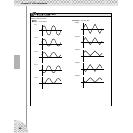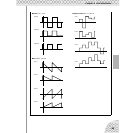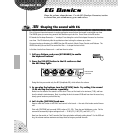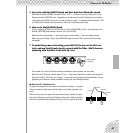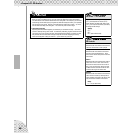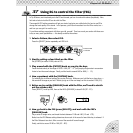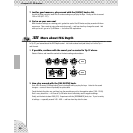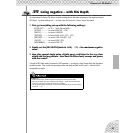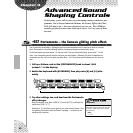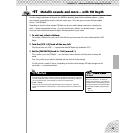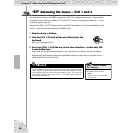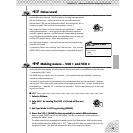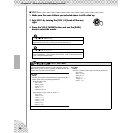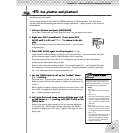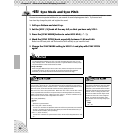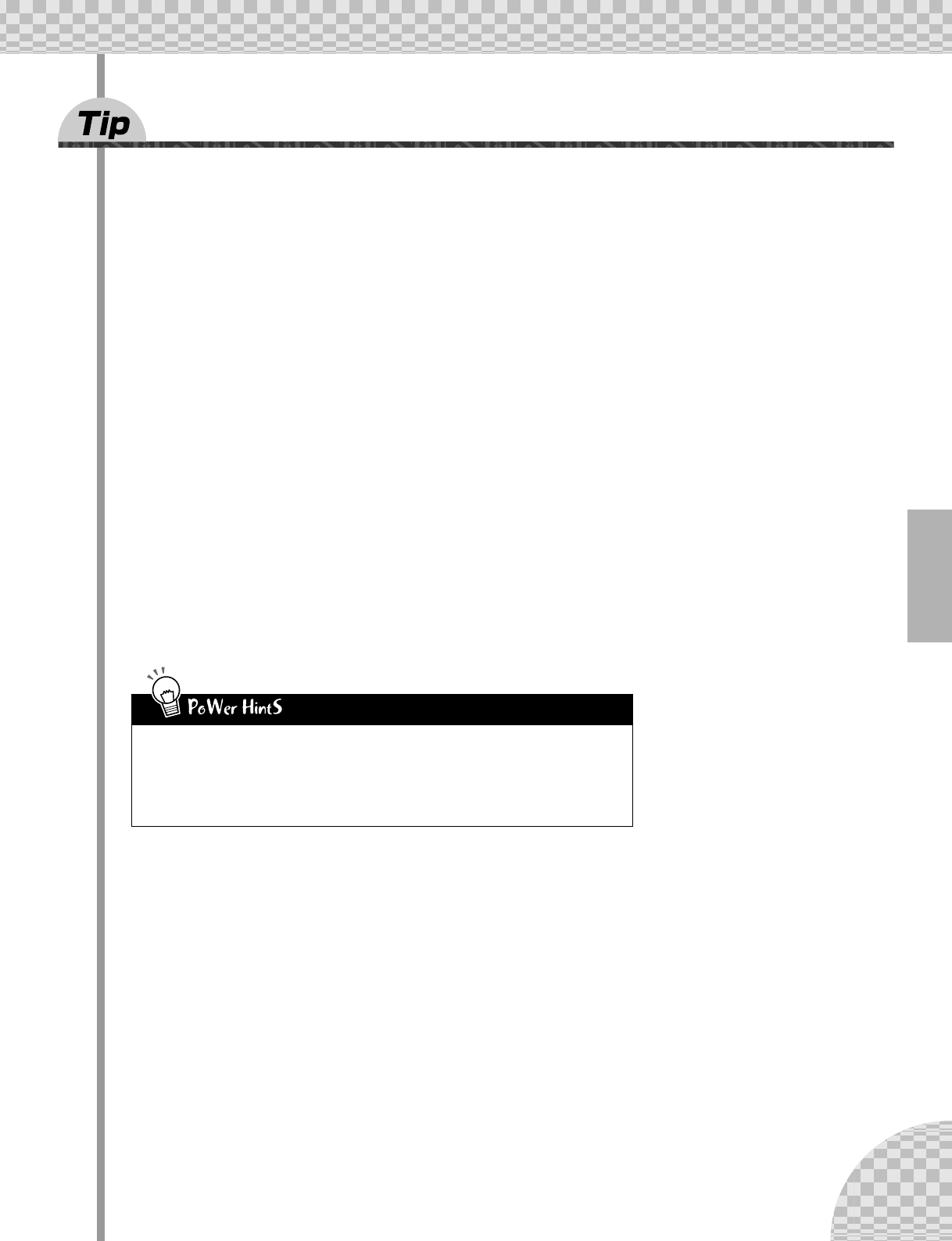
51
Chapter 10 EG Basics
39 Going negative — with FEG Depth
As we promised in the last Tip, here’s a sound-creating pointer that takes advantage of the negative values of
FEG Depth. Try these settings out — and hear what it’s like on the “minus” side of the sound.
1 First, get everything set up with the following settings:
EG [SELECT]...........to “ALL” (both FEG and AEG)
[ATTACK] ................to around 2:00 (90 - 100)
[DECAY]..................to around 1:00 (80)
[SUSTAIN] .............. to around 3:00 - 4:00 (100 - 120)
[RELEASE]..............to around 1:00 - 2:00 (80 - 90)
[CUTOFF]................ to around 2:00 (100)
[RESONANCE] ........ to around 2:00 (70)
2 Finally, set the [FEG DEPTH] knob to 7:00 (-128) — the maximum negative
value.
3 Now, play several single notes, slightly apart, and listen for the very slow
attack and the long sustain. Hear how the filter slowly sweeps and grows
with the sound?
A negative FEG Depth setting reverses the FEG operation — producing a filter sweep effect that dips down
instead of peaks. This means the sound gets softer and more muffled, until the end — when the filter
sweeps back up again.
Try these, too
• Experiment with higher Cutoff and Resonance settings than the ones shown above.
• Adjust the FM Depth, Sync Pitch, and Noise Level settings — to give the Filter some richer
harmonics to work with, and make the sound more interesting.
• For even greater degrees of weirdness, try some long Portamento settings, too (for example,
around 90 - 110).




